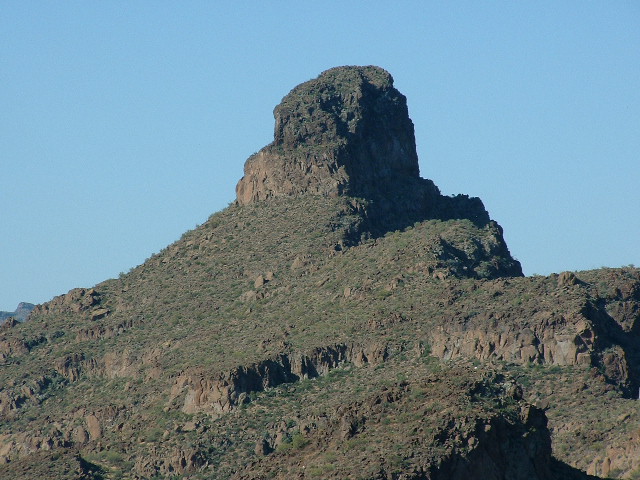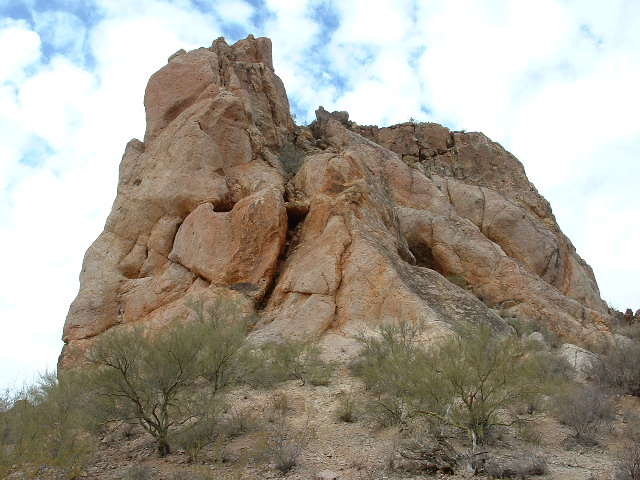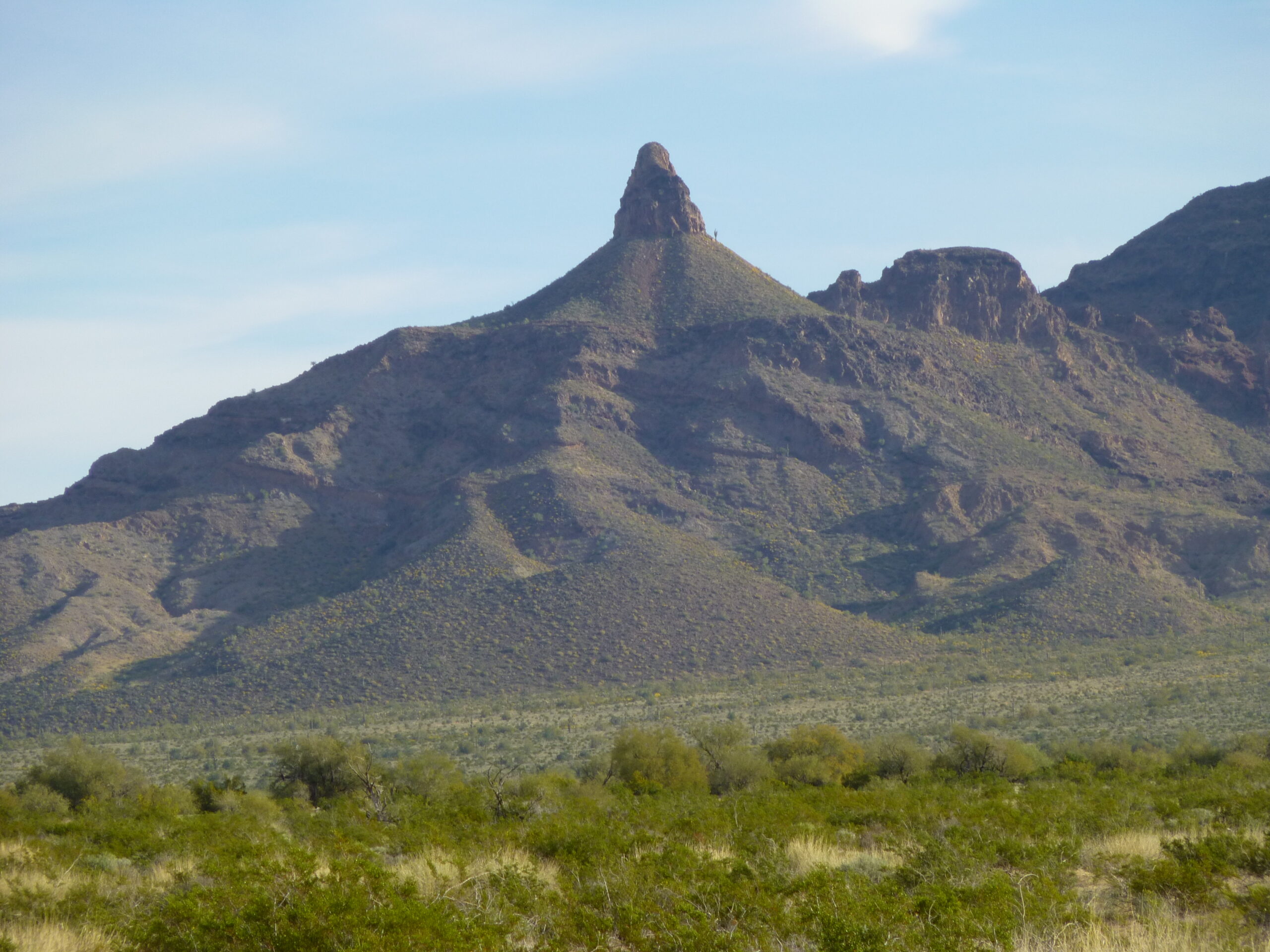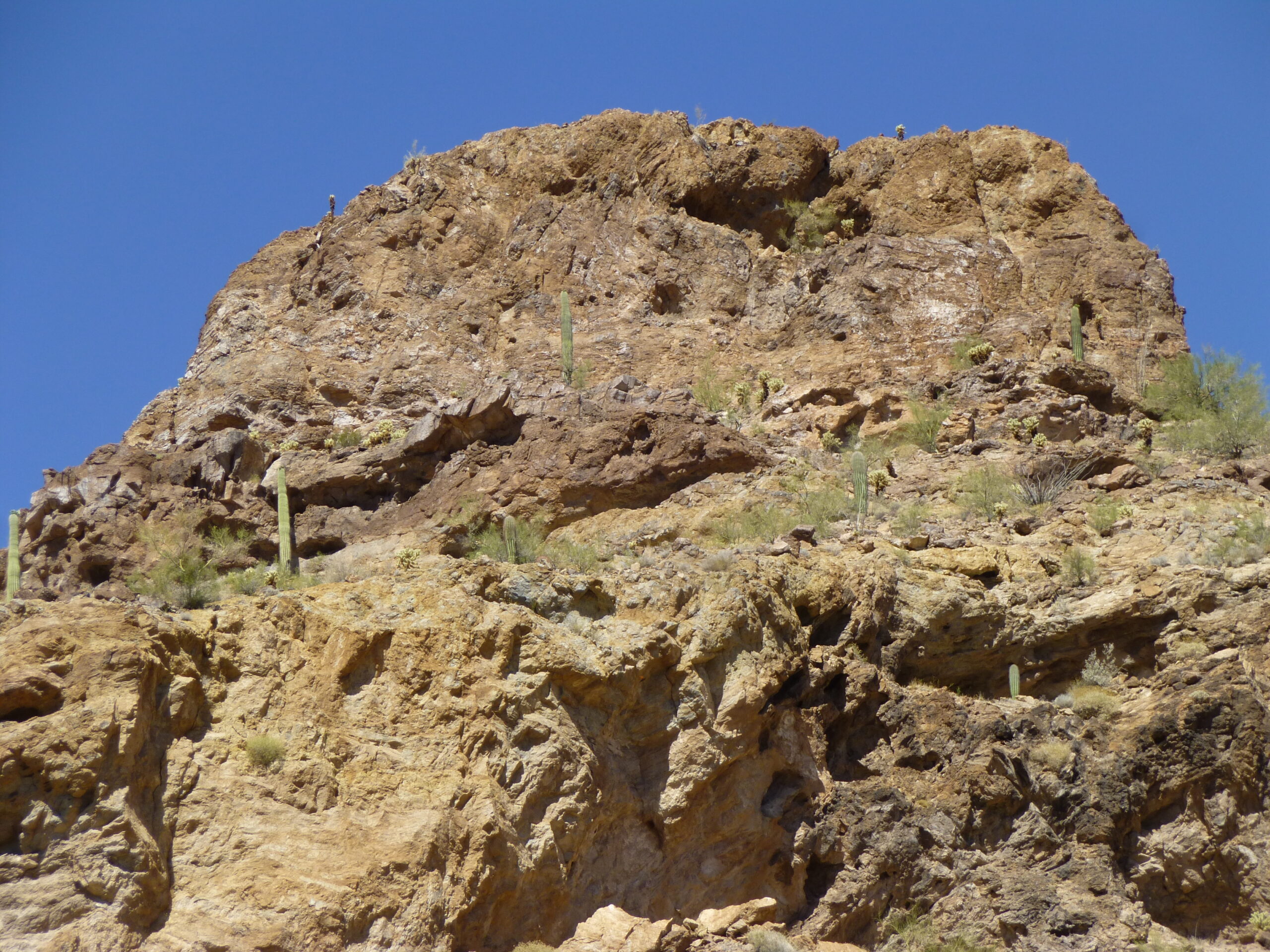What do climbers mean when they speak of a climb as being technical? What exactly is the definition of a technical climb? Well, in order to better educate myself, I Googled it. There, I came across this definition: a type of climbing that requires specialized skills and equipment to navigate difficult terrain like steep rock or ice, often utilizing ropes, harnesses and other protective gear to safely overcome challenging obstacles. So, the term includes climbing not just on rock but also on ice. That being the case, we could include climbs that involved the use of ice axe and crampons, as well as rock climbs involving rope and the placement of hardware for protection.
I had been messing around in the hills for 5 years, just bushwhacking my way to the tops of wooded peaks near home, before the time came to get technical. In 1967, while working in mining exploration in northern BC, there were many days of being helicoptered into alpine country above tree-line where we donned crampons and ice axe, and often roped up for glacier travel. One memorable day was a nearly-complete ascent of Ambition Mountain. In late December of 1967, my university room-mate and I attempted a winter ascent of Mt. Baker, and darn-near succeeded. Again in the summer of 1968, lots of glacier travel while doing mining exploration.
Twice in 1968, my room-mate and I attempted what amounted to winter attempts on Wedge Mountain, once in February and again in October. Both tries ended in failure due to our lack of experience with deep snow. Years passed with nothing technical attempted, until 1974 arrived – finally, a successful climb of Wedge Mountain, as well as a solo ascent of Glacier Peak. Came 1975, and I was getting plenty used to glacier travel. I tried Mt. Rainier with 2 friends, but got altitude sick a thousand feet below the top and didn’t summit. However, I did a really neat solo ascent and traverse of Mount Breakenridge. In 1976, I did the same thing with Mt. Garibaldi, then headed down to Mexico for ascents of Popocatéptl and Orizaba.
When 1977 arrived, we headed down to the big Cascade volcanoes in Washington state, where I finally summited on Mt. Rainier, then climbed Mt. St. Helens before it blew up; Mt. Adams also felt the sting of our boots as we made our way to the summit via the North Cleaver. Then followed another ascent of Wedge Mountain by a different route. Three days on Stein Mountain were spent in snowy conditions, but the best outing of the year was the 8-day traverse through the Lillooet Range done by me and Brian Rundle through storm and endless miles of glacier travel. I would be remiss if I didn’t mention that 2 friends and I put up the first winter ascents of both Stewart Peak and The Still in the Cheam Range early in the year on January 6th.
The year 1977 also saw my first serious forays into rock climbing. Brian and I spent a day at Squamish and did a climb of a route known as Deidre (5.8) – I wore a pair of borrowed Royal Robins rock-climbing shoes and Brian wore his mountain boots. I spent some time climbing on a crag near Chilliwack with a climber recently-returned from a month-long expedition in Alaska, and also spent some time climbing rock with friends Paul and Ken from Mission at a spot called Ruby Creek, in the process learning a bit more of the craft. I didn’t really take to it very strongly, though, unlike Brian who went on to be an accomplished climber on technical rock.
Another memorable year was 1978, with the February first ascent of Robertson Peak with Ross Lillie, done with snowshoes, crampons, ice axe and rope. March 12th saw me and Brian Rundle putting up the first winter ascent of Castle Towers, as snowy a climb as you can imagine. In July, I made 2 long traverses down the east, then the west, sides of Tretheway Creek, climbing all of the peaks en route.
Nothing technical occurred after that until 1981, when Ross Lillie and I spent several days on the Columbia Icefields – an unsuccessful climb of Mt. Columbia resulted, but we did make it to the top of Snow Dome. Brian and I reunited for several days of climbing in the Wind Rivers of Wyoming in 1986. In 1988, I spent a week north of Lake Louise climbing several peaks, then met up with Brian once again for an unsuccessful attempt on the northwest arête of Mt. Sir Donald. A summit climb of Mt. Athabasca also took place in July of the same year.
Significant climbs occurred in 1989, with an ascent of Mamquam Mountain, then 10 days on Mt. Robson, where we were twice turned back by bad weather on the Kain Face. Also in the same year, I climbed both South and North Feathers of the Eagletail Mountains while another fellow led both climbs.
The next day, I met Barbara Lilley and Gordon MacLeod in the Tank Mountains. They had tried to climb the range high point a couple of times but were stymied by the steep summit rock. Somehow I managed to lead us up a roped climb for the first ascent. That was the only rock climb that I would ever lead.
Came 1990, and I realized a dream of finally heading south to climb Cerro Aconcagua. Bad weather proved my undoing, so I returned in December and spent a while acclimatizing at high altitude in the Cordón del Plata before going back in to Aconcagua and successfully summiting in a round-trip time of 8 days. It was New Year’s Day of 1991 when I reached the top. Later that year, I once again met up with Brian at Lake Louise for a week of climbing. Even with all of the crappy weather, we did manage a bit of climbing.
It wasn’t until 1996 that Brian and I met up again, this time for some South American climbing. We didn’t make it all the way to the top of Nevado Sajama, but had better luck on Volcán Parinacota, reaching 20,762 feet just a bit shy of the summit.
By 1985, I had moved to Arizona. Peakbagging took off at a frantic pace and remained so for years, but some peaks crept into the scene which required a technical hand. I needed someone to lead those climbs – I would merely follow at the back end of the rope. In the year 2000, a group of us went in to try Peak 4088 – a bit of ropework at the summit. That was my first time on a rope with Andy, and it would be far from the last.
In late November of 2003, Brian flew out from Chicago for our attempt on Peak 6328. This climb took 3 days, involved much involved rock climbing, and was an ascent that hasn’t been repeated to this day. The next photo shows the peak – it’s the one just to the left of center. Our route went up to the deep cleft on the right side, then up the skyline on the right side of the peak to the summit. It was detailed, and involved a couple of close calls. We spent a night in an unplanned bivi in the cleft.
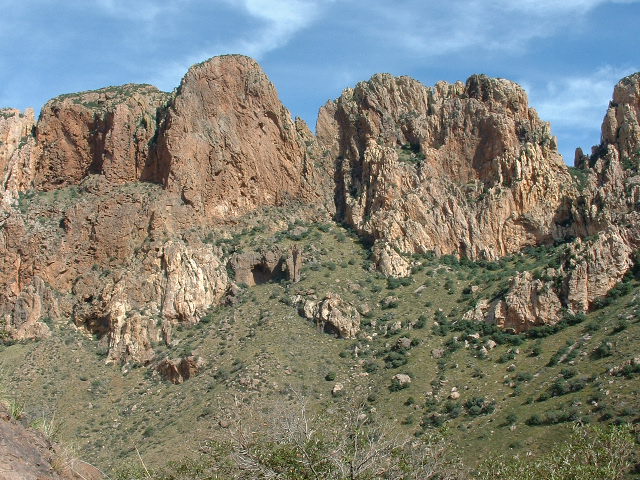
In July of 2004, Andy returned from a couple of years out-of-state and we headed out on a blistering day in June to climb a couple of peaks in the Castle Mountains. This photo shows the first one – Peak 3010 is the one in the center of the photo – we went up the left side.
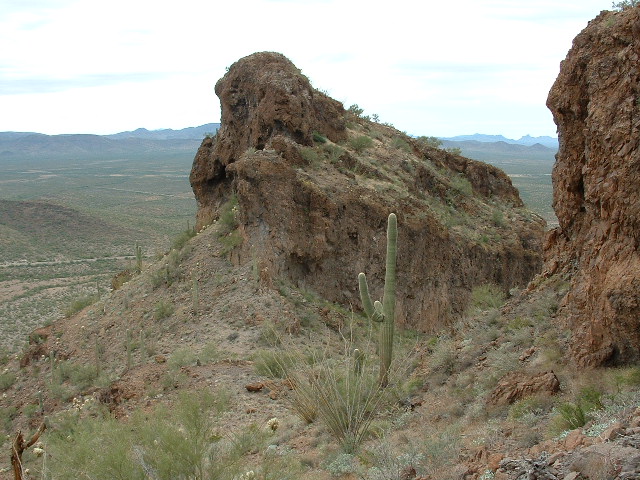
The same day, we did a climb of Peak 3050, only half a mile to the south. This crumbling mass of volcanic rock sits right beside the highway. Our ascent was the first and probably will be the last.
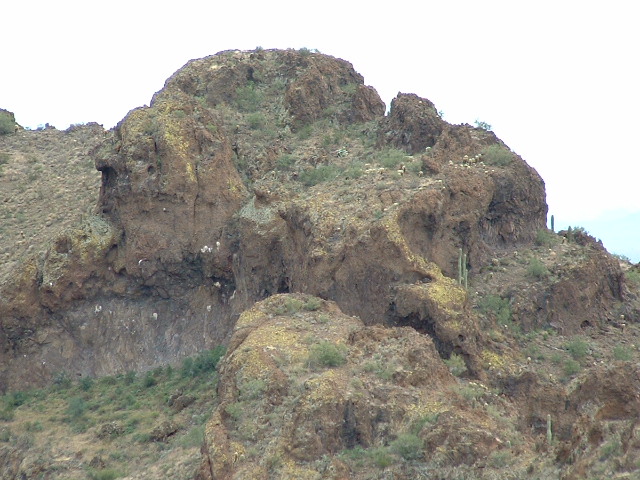
In 2005, I spent 3 days with Andy trying to find a way up the south side of a peak we called The Ugly Sister. How well I remember rappelling into the black night into messes of cactus. We didn’t unlock any secrets on that trip. However, in February of 2006, Brian flew back out from Chicago and we put up a 2-day ascent of the peak by a different route. It was breathtakingly steep, with varied and interesting climbing, but we made it. That one involved spending the night in a cave on the way down. Next, you see the same picture you saw earlier – Peak 6328 is to the left of center. The Ugly Sister is the large, rugged mess to the right of center. Its highest point is over to the left, near the cleft.

Fresh off of the success of our first ascent of The Ugly Sister, we made our way west to a remote area on the reservation where sat an interesting peak – this one straddled the border with Mexico – it literally sat right on the boundary. High up on it rested Border Monument 153, placed there by the border surveyors long ago. This peak was a real puzzler. I went there alone once, climbed up the hill on the Mexican side and found myself staring at near-vertical rock – there was no way I could climb it. I returned with climber friend Dave from Los Angeles. We roped up and he led up to the monument itself, but declared the last bit to the summit to be too dangerous to try with our lack of proper equipment. So, Brian and I went there directly from The Ugly Sister. He climbed up to the monument, brought me up, then we pondered the rest. He did a masterful lead along teetering blocks horizontally to finally reach the true summit. Funny thing, we had to sneak into Mexico to access the climbing route itself. While there, we saw a vehicle dropping off indocumentados who would lay low until nightfall, then scurry across the border into the US. It was a wild, lawless area.
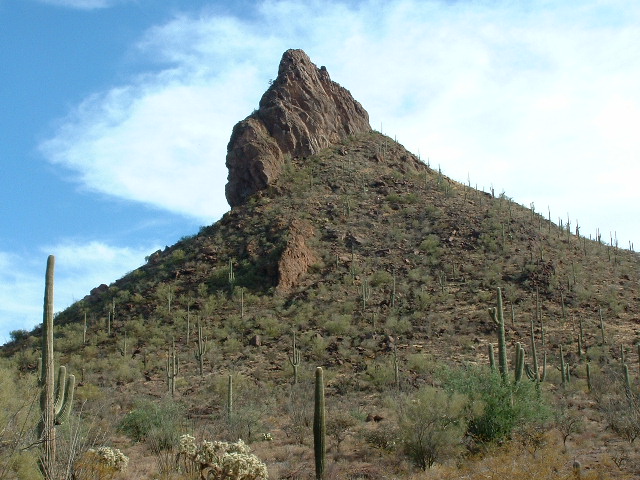
The border peak, otherwise known as Peak 2650.
Within the city limits of Tucson sits a small crag known as Beehive Peak. I went there one hot day in 2006 with friend Andy M. and also lead climber Andy. We roped up and climbed up past a hive of wild bees, getting stung in the process before arriving on the summit. This climb isn’t done but rarely – maybe word has spread about the bees!
The next technical peak I climbed was once again with lead climber Andy. We went there one hot July day in 2007 – one easy pitch took us to the summit. We had to move our starting point because once again, we happened to be standing right beside a hive of wild bees flying in and out of the home they had made in a crack in the rock.
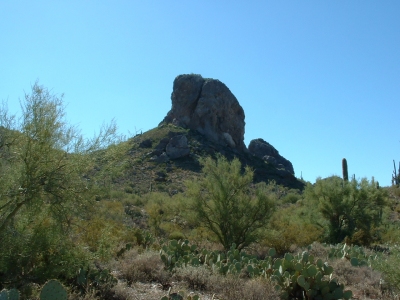
When 2009 arrived, I found myself once again in Andy’s company – he led a small group of us up Mildred Peak one fine October day.
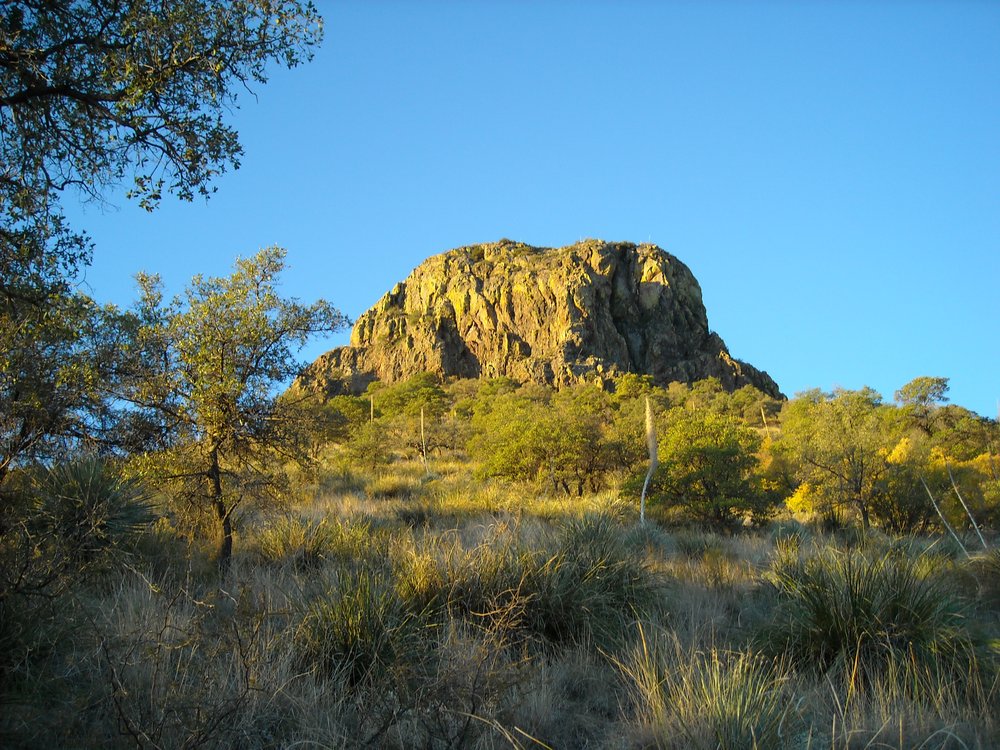
In December of the same year, Andy and I trekked across the desert towards Montezuma Head. We put in a very long day and completed the climb okay, but I am not shy about saying that the steepness and exposure scared me more than any other peak I’ve ever climbed.
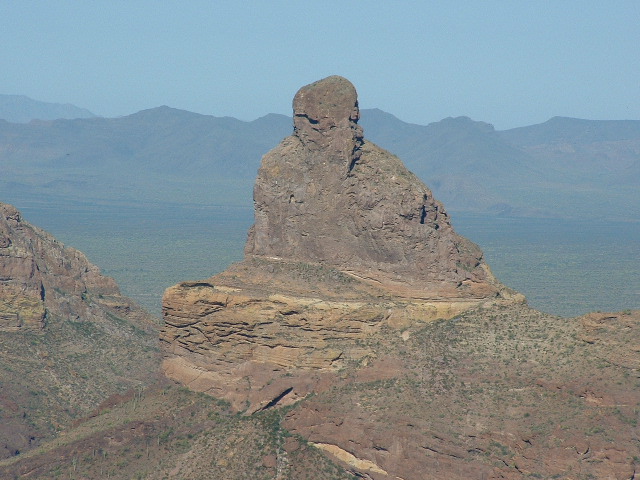
A short time later, in January of 2010, Andy and I teamed up once again to climb a peak that had stymied a few previous attempts. Tom Thumb was a real brute, and just looking at it put the fear of God into you.
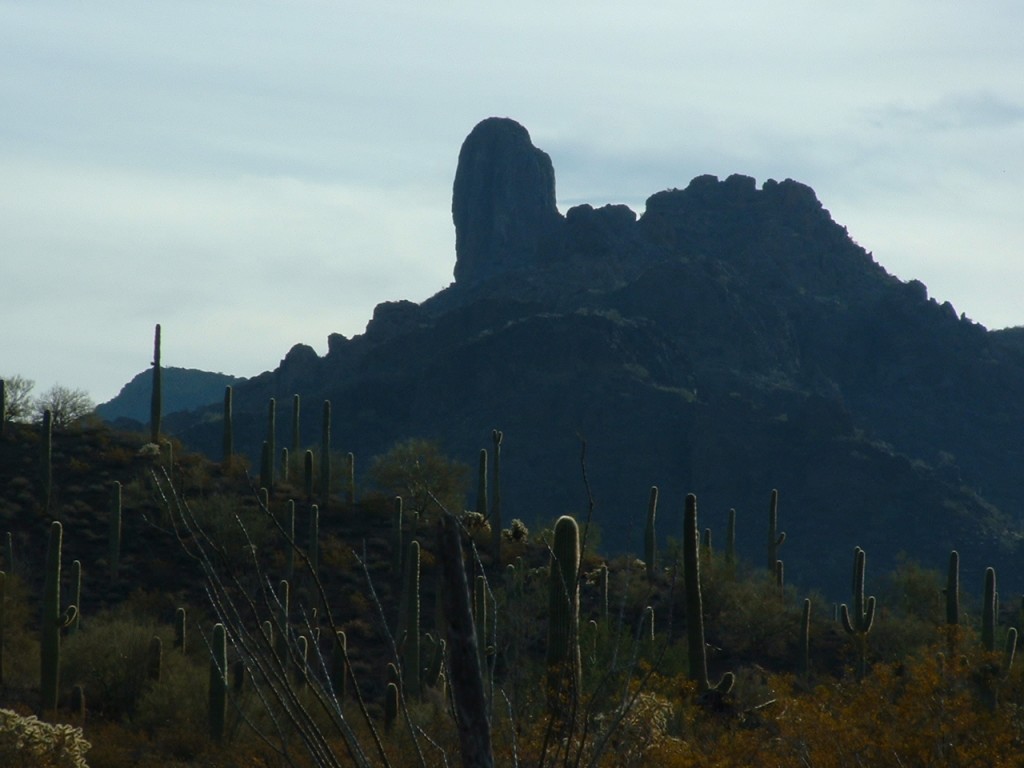
Looking east towards Tom Thumb from a mile away.
It turned out to be the most difficult peak, technically, that I had ever tackled, but Andy was up to the challenge and led it in grand style. I was able to follow, but just barely. Just a few months later, Andy and I headed out into the western desert to tackle a well-known technical climb that he had been telling me about. It was a long, hot climb where we ran out of water, but we made it to the top. April can be a very hot month in these parts, and we certainly learned that lesson.
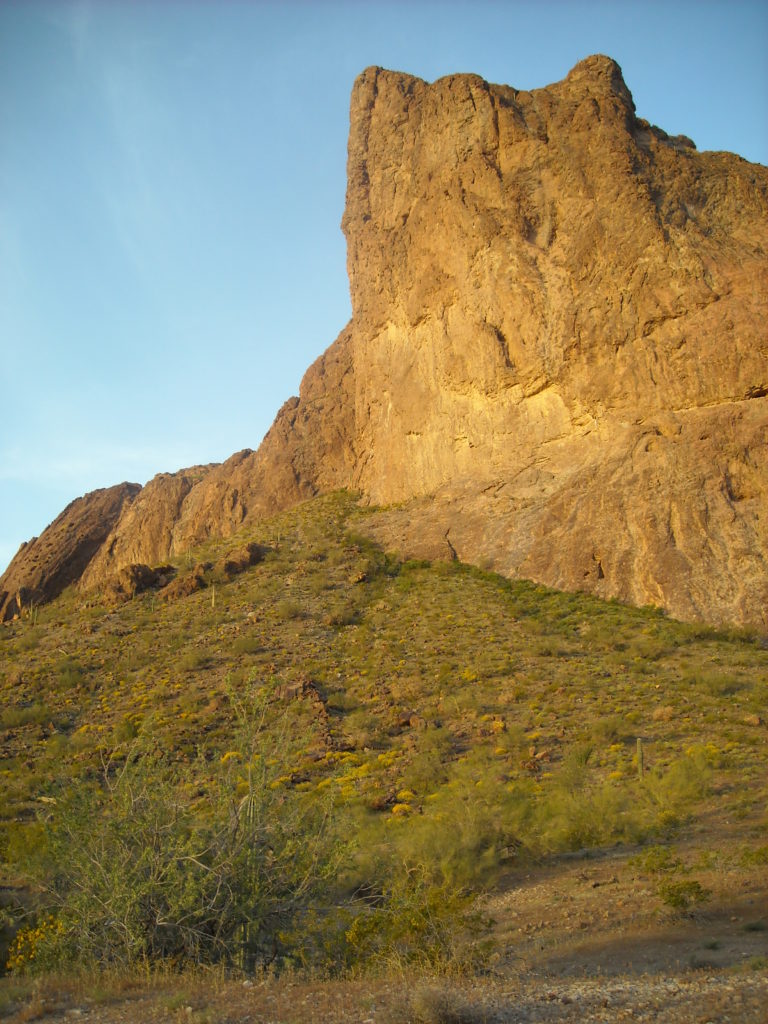
The north side of Courthouse Rock
More years passed. I needed to climb a peak in order to cross it off a list I was working on, and Andy and I agreed to go in and give it a try – it was a pleasant October day in 2014 when we headed in to climb Ajo Peak. This was one steep climb which gave no quarter – very steep, but enjoyable. Andy figured out the best way up, and we made it.
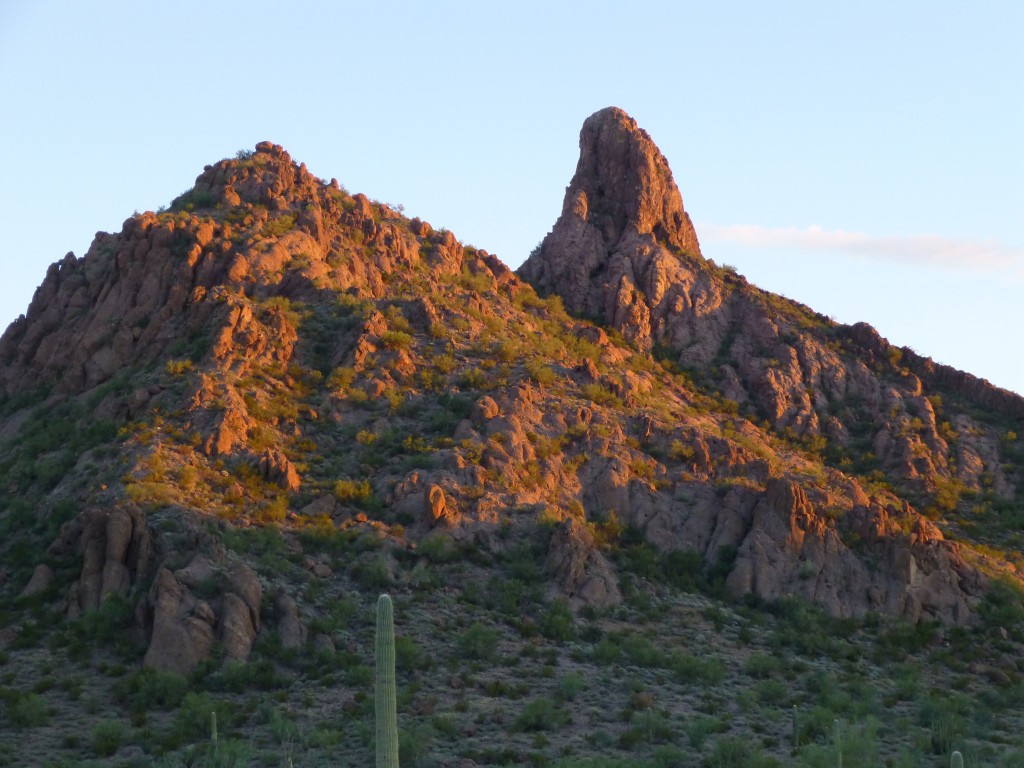
Ajo Peak is the one in the back.
There was another technical problem I had to solve. Sheep Peak, a steep spire out in the remote Growler Valley, stood resolute, mocking all who saw her. Andy had been there with some of our climber friends years ago, but they didn’t have the gear needed to attempt such a climb. Late in 2013, I went in with Andy to attempt it – we ran out of daylight, but not before Andy managed a solo, unprotected climb to the summit.
Late 2014 saw us return – Andy, John and myself. By allowing more time, we three all made it to the top. What a prize!
Remember Montezuma Head earlier in this story? Just to its north sat a small peak – small, but well-guarded. Others had failed, but Andy led us up the overhanging start and got us to the top for another first ascent. The ascent route for this one, Peak 2725, was up the right-hand side.
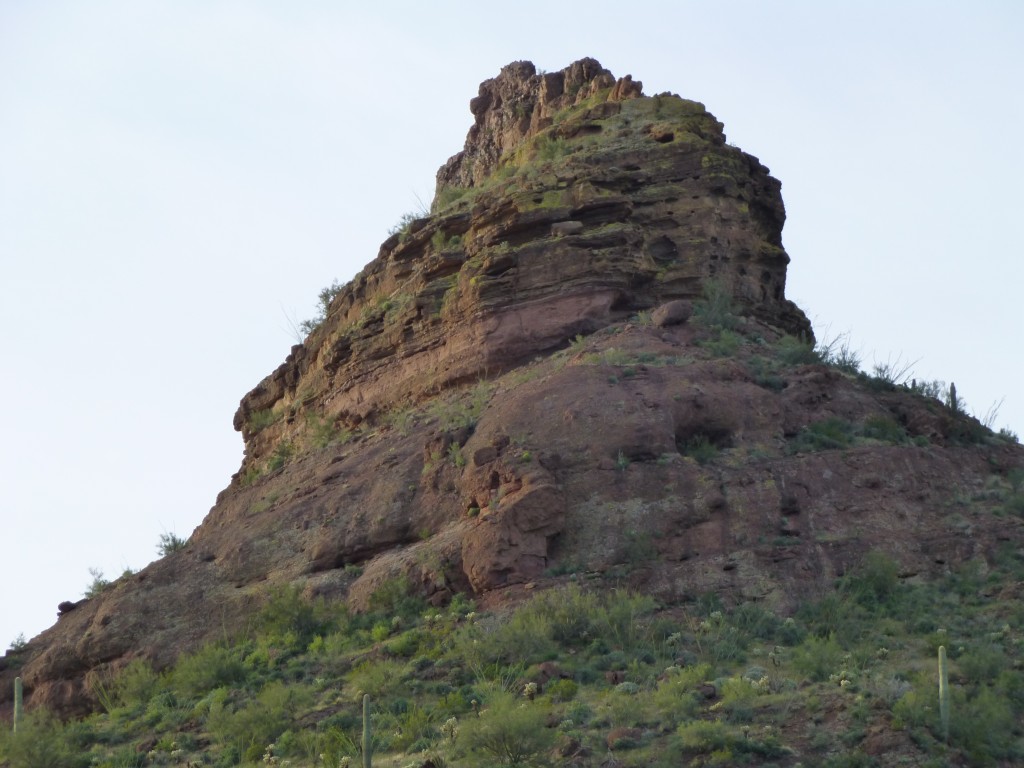
Fast-forward a few more years to 2016. John and I wanted to climb Hat Mountain, an impressive-looking peak out on the bombing range. His wife-to-be, Tamika, joined us for another climb that Andy led. It was August 16th, and we knew it’d be hotter than a two-dollar pistol, so we started in pitch-blackness. Andy got us all to the top all right, and we savored the fine day on the flat summit.
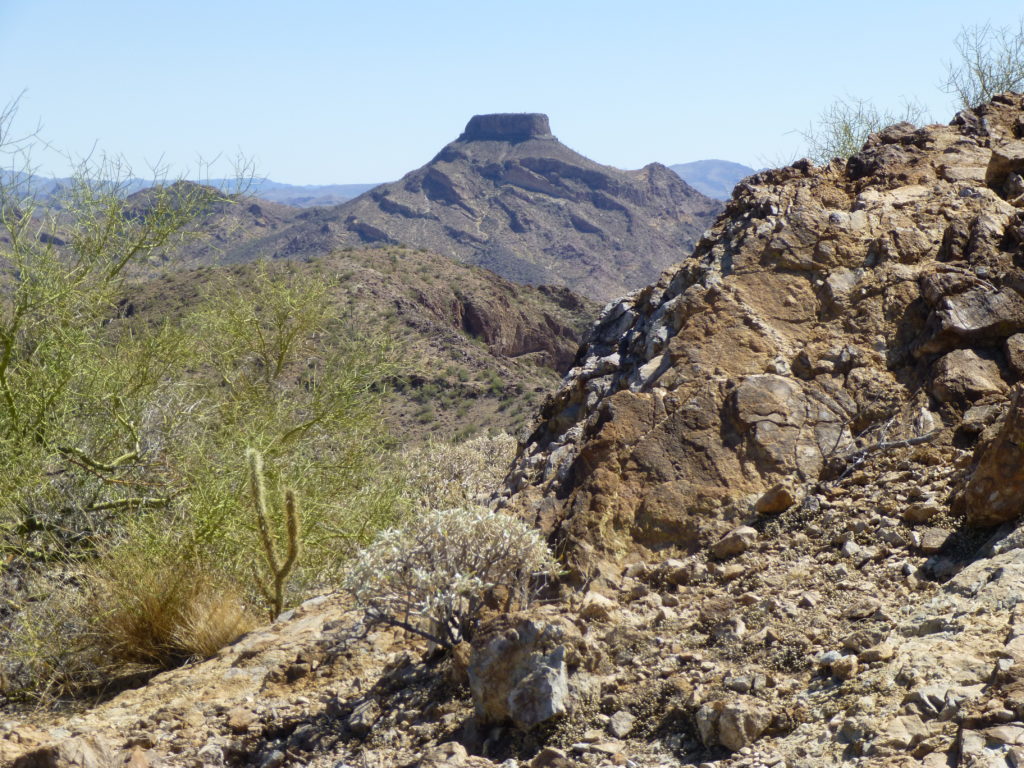
Andy and I did one more together – a small one, Peak 1900, tucked away in an obscure corner of the Sauceda Mountains. We did this one in April of 2017 on a day that heated up quickly – we got back out just in time.
That was the last technical climb I did – 8 years ago as I write this. It’s odd that I really didn’t do much rock climbing until my later years. Even though all of my technical climbs added together were only a tiny percentage of everything I ever climbed in my life, there were some good ones, and I had some fun. Thanks for sharing my journey with me.

